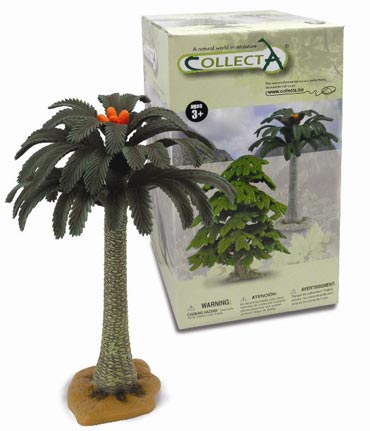Yes, There are Cycads Around Today – Amazing Prehistoric Plants
Cycads Survivors from the Palaeozoic
Cycads, those exotic, tree-like ferns originated sometime in the Palaeozoic probably during the Permian Period, although some scientists have suggested that they date back to the Carboniferous. The trouble with plants is that they tend not to fossilise very well and as a result the fossil record for plant remains is very sparse. To add to the problems encountered by palaeobotanists, plants tend not to fossilise as a whole, individual leaves, cones, pollen, roots and trunks are preserved. As these different parts are found separately in the rock record, and are discovered at different times, each piece tends to get a different scientific name. The tree-sized clubmoss (Lycopsid) Lepidodrendron has about ten binomial names associated with it. For example, the fossilised roots are referred to as Stimaria and the base of the trunk is known as Knorria.
Cycads
All very confusing, but as we were reminded yesterday, prehistoric plants are all around us. Sphenopsids (horsetails) originated perhaps as far back as the Devonian, but the Equiseteum, of which there are about twenty species are still around today. You can purchase Japanese horsetails at most garden centres and very nice they look to planted close to water. Cycads, we think a number of genera are still around today. These palm-like seed plants with massive, thick stems and their crown of fern-like fronds were some of the most common types of plants to be found during the Jurassic and Cretaceous. Cycads produced by means of seeds, mostly borne on modified fronds grouped together to form a cone. The only living exception is the most primitive living example, Cycas, where modified fronds bearing seeds are separate from one another. Modern cycads are relatively squat compared so some of their extinct relatives that could reach twenty metres tall or more. They are found in frost free regions of the world and a number of genera can be found on several continents indicating a much wider distribution in the past.
The CollectA Cycad Model
To view replicas of prehistoric plants in the CollectA range: Prehistoric Plant Models and CollectA Figures.
There were even cycads growing at the South Pole in Cretaceous times, although these types of cycads shed their leaves as winter commenced.
Visitors to Kew Gardens can see a giant Eastern Cape cycad, believed to be the world’s oldest pot plant. This plant was brought to England in 1775.


